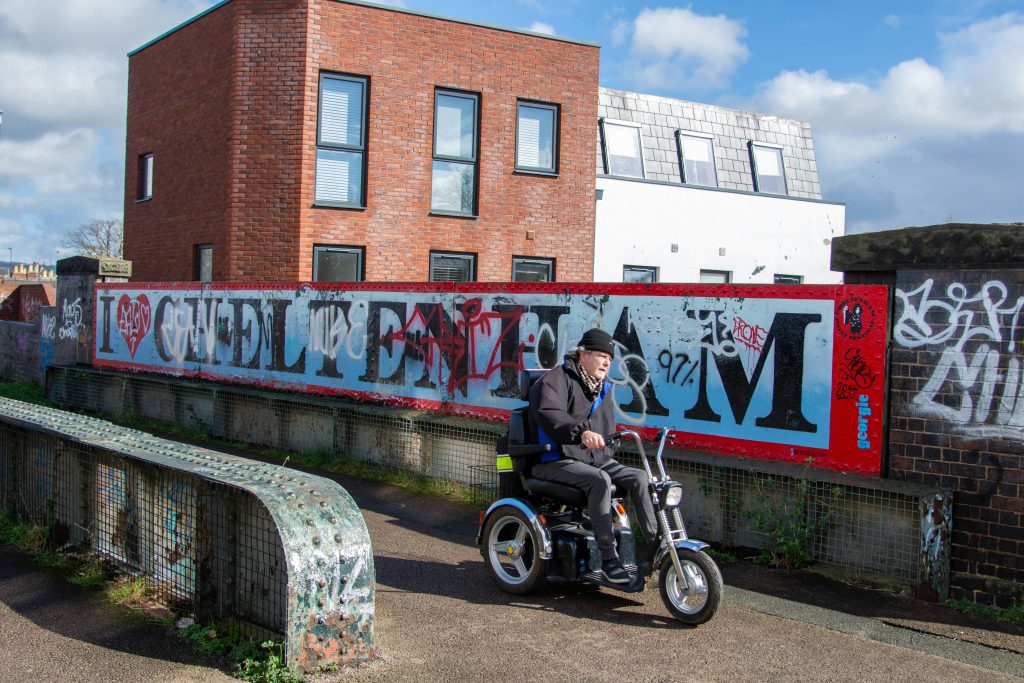?Are you wondering how much weight a typical rental mobility scooter can safely carry?

What Is The Weight Capacity Of A Typical Rental Mobility Scooter?
You’ll find that weight capacity is one of the most important specs to check before you rent a mobility scooter. The capacity determines not only whether the scooter can physically support you, but also how it will perform, how far it will go on a charge, and how stable it will feel on different surfaces.
Why this matters to you
If you rent a scooter that’s rated below your weight (or below your total loaded weight including bags, oxygen tanks, or other accessories), you could face safety risks, reduced battery range, or premature mechanical wear. You want a scooter that will feel secure, perform predictably, and keep you comfortable for the duration of your rental.
Typical Weight Capacity Ranges
You’ll see a range of weight capacities across rental mobility scooters. These ranges give you an idea of what to expect when you contact a rental provider.
| Scooter Class | Typical Weight Capacity (lbs) | Typical Capacity (kg) | Notes |
|---|---|---|---|
| Standard / Economy | 250 – 300 lbs | 113 – 136 kg | Most common for short-term rental; lightweight and easy to transport |
| Mid-Size / Heavy-Duty | 300 – 400 lbs | 136 – 181 kg | Better frame, stronger motor, wider seat; good for everyday use |
| Bariatric / Extra-Heavy | 400 – 700+ lbs | 181 – 318+ kg | Purpose-built for higher weight; reinforced frame and larger motors |
What these ranges mean for you
If you weigh around 200 lbs (91 kg), a standard scooter will usually be fine. If you weigh closer to 300 lbs (136 kg), you’ll likely want a mid-size or heavy-duty model. If you’re over 350–400 lbs (159–181 kg), look specifically for bariatric models and confirm the manufacturer’s published limit.
Static vs. Dynamic Weight Capacity
You’ll want to understand the difference between static and dynamic weight capacity because manufacturers sometimes list one and not the other.
- Static weight capacity: This is the amount the scooter can hold when it’s stationary. It tells you how much weight the seat and frame can support without collapsing.
- Dynamic weight capacity: This is the amount the scooter can safely carry when it’s moving, turning, climbing a ramp, or navigating uneven surfaces.
Why dynamic capacity can be lower
When you’re turning or climbing, forces increase because of momentum and slope. A scooter that seems fine when sitting still may strain under dynamic conditions. Rental companies usually quote the manufacturer’s dynamic capacity, but you should always confirm.
How Manufacturers Test Weight Capacity
Manufacturers follow industry test protocols to determine capacity, but test standards can vary. You should know what tests are commonly performed.
- Load testing on flat, level surfaces to measure seat frame strength.
- Dynamic stability tests to assess tipping or loss of control on turns or slopes.
- Structural fatigue tests to simulate repeated loading and unloading over time.
- Motor and drivetrain performance under load to measure power delivery and thermal stress.
What you should ask the rental company
Ask whether the weight capacity is a static or dynamic rating, which tests the manufacturer used, and whether the specific scooter model has any recent service or history of heavy usage.
Factors That Determine Weight Capacity
Several design and component factors influence a scooter’s capacity. Knowing these will help you pick the right model.
- Frame material and design: Heavy-gauge steel and reinforced welds increase capacity.
- Motor power and drivetrain: Higher torque motors handle heavier loads better.
- Tire size and type: Larger pneumatic tires absorb terrain irregularities and improve stability.
- Battery capacity: Larger batteries can sustain power draw under heavy loads.
- Seat and mounting hardware: Reinforced seat rails and wider bases spread weight.
- Wheelbase and center of gravity: Longer wheelbase and lower center of gravity add stability.
How these affect your ride
If you choose a model with a sturdy frame, strong motor, and proper tire setup, you’ll notice better hill-climbing ability, more predictable handling, and fewer battery surprises.
How Weight Affects Performance and Safety
Your weight isn’t the only thing that matters. Total loaded weight — including bags, oxygen tanks, walkers, or shopping — affects how the scooter performs.
- Range: Increased weight reduces the distance the scooter can travel on one charge.
- Speed: Heavier loads may lower top speed and acceleration.
- Braking: Stopping distances can increase under heavier loads.
- Maneuverability: Turning may feel sluggish and the scooter could be more prone to tipping on sharp turns.
- Climbing ability: Heavier loads reduce the ability to climb steep ramps or inclines.
Simple rule of thumb
Add an estimated 10–20 lbs (4.5–9 kg) for bags and accessories, more if you carry medical equipment. Always add that to your body weight when comparing to the scooter’s capacity.
Calculating Your Total Load
You should calculate a realistic total load before choosing a rental scooter. Here’s a simple step-by-step:
- Start with your body weight.
- Add clothing, shoes, and any carried items (wallet, phone, keys).
- Add medical gear (oxygen tanks, pumps) and assistive devices (cane, walker).
- Add shopping or luggage you expect to carry while using the scooter.
Example:
- Your weight: 220 lbs
- Medical oxygen + carrier: 30 lbs
- Shopping bag: 10 lbs Total: 260 lbs → You’ll need a scooter with a capacity above 260 lbs, ideally with a margin of 20–30% for safety.
Common Classes of Rental Scooters and Typical Use Cases
You’ll see different models suited to different needs. Here’s a breakdown of common classes and when you’d choose them.
Compact and Travel Scooters (Typically 200–300 lbs)
These are lightweight and often foldable or easy to disassemble. You should choose one if you need portability for travel or short trips and your total load fits within the capacity.
Mid-Size/Retail Rental Scooters (Typically 300–400 lbs)
These are the most common in rental fleets. You should choose a mid-size scooter for daily outdoor use where you need better stability, longer range, and a wider seat.
Bariatric/Heavy-Duty Scooters (400–700+ lbs)
Choose these when your total load exceeds 350–400 lbs, when you need an extra-wide seat, or when you plan to stay seated for long periods and want extra comfort and durability.

How Weight Capacity Affects Range: Practical Estimates
You’ll notice that heavier loads reduce battery range. The specifics vary by model, but general estimates are useful when planning trips.
| Added Weight | Estimated Range Reduction |
|---|---|
| +0–50 lbs (0–23 kg) | 5–10% reduction |
| +50–100 lbs (23–45 kg) | 10–20% reduction |
| +100–200 lbs (45–91 kg) | 20–35% reduction |
| +200+ lbs (91+ kg) | 35%+ reduction — depends on scooter class and terrain |
What this means for you
If a manufacturer quotes a 20-mile range for a certain model and your added weight reduces range by 20%, expect closer to 16 miles instead of 20. Always assume some margin, especially if you’ll encounter slopes or uneven ground.
Terrain, Inclines, and Environmental Factors
You’ll need to consider where you’ll be using the scooter. Smooth indoor surfaces have minimal impact, while hills, grass, and gravel significantly affect capacity and performance.
- Inclines: Check the scooter’s maximum incline rating at the given capacity. Heavier loads reduce incline performance.
- Soft surfaces: Sand, grass, mud and gravel increase rolling resistance and decrease range.
- Weather: Wet, snowy, or icy conditions can reduce traction and increase risk — avoid such conditions where possible.
Practical tip
If you plan outdoor routes, test a short segment with your total load before committing to a long rental. That helps you gauge real-world performance.
Rental Company Considerations and Questions to Ask
When you contact rental companies, you should get clear answers to these questions:
- What is the scooter’s published weight capacity (static and dynamic)?
- Is the capacity the manufacturer’s rating, or has it been altered?
- How old is the scooter and when was it last serviced?
- Are there bariatric models available if I need higher capacity?
- What accessories are available (oxygen tank holder, basket) and do they count toward capacity?
- Is there an on-site instruction or demonstration?
- What is the rental company’s policy if the scooter fails due to overloading?
Rental checklist (table)
| Question to Ask | Why it matters |
|---|---|
| Manufacturer & model | Verify spec sheet for capacity and range |
| Static vs dynamic capacity | Ensures safety during movement |
| Service history | Older scooters may have reduced performance |
| Available accessories | Some accessories add weight or change balance |
| Replacement policy | Know options in case of malfunction |
Safety Best Practices
You’ll want to adopt safe habits to reduce risk and maximize the lifespan of the rental scooter.
- Stay within the published capacity with a margin of 20–30% when possible.
- Distribute weight evenly, keep heavy items low and centered.
- Avoid sudden turns at high speed, especially with a heavy load.
- Use ramps designed for scooters and check incline ratings before attempting steep slopes.
- Inspect the scooter before use: tires inflation, brakes, battery charge, and seat mounting.
- Ask for a safety orientation if you’re unfamiliar with the model.
When to avoid a rental scooter
If you have medical conditions that affect balance or if your weight exceeds the scooter’s capacity, consider alternatives like power wheelchairs or custom solutions.

Modifications and Aftermarket Options
You might wonder if you can modify a rental scooter to increase its capacity. You should be cautious.
- Aftermarket seats, wider tires, or stronger batteries can sometimes help, but modifications can change the manufacturer’s ratings and void warranties.
- Rental companies are unlikely to allow modifications for a short-term rental.
- For permanent needs, consult a mobility specialist who can recommend or order an appropriately rated bariatric scooter or a power wheelchair.
What you should do instead
If you need more capacity, request a higher-capacity scooter from the rental company or look into specialized mobility providers who carry bariatric models.
Insurance, Liability, and Rental Agreements
You should read rental agreements carefully because liability can change depending on how the scooter is used.
- Many rentals hold you responsible for damage caused by exceeding weight limits.
- Some agreements include limited insurance or damage waivers — verify what’s covered.
- If an injury results from using a scooter outside its rated capacity, you may not be covered by insurance.
Recommendation
Always ask for a written spec sheet and confirm the scooter’s weight limit before signing the rental agreement.
When You Need a Bariatric Scooter
If your total load approaches or exceeds 350–400 lbs, you should seek a bariatric scooter.
- These scooters are designed with reinforced frames, wider seats, and higher-capacity motors.
- They often have higher weight ratings and larger batteries to offset the additional load.
- Bariatric models are less common in general rental fleets but are available through specialized providers.
Things to confirm when renting a bariatric scooter
Ask about seat width, turning radius, Bluetooth or other comfort features, and whether the scooter has a reinforced joystick assembly (a common failure point on overloaded units).
Maintenance and Inspection Tips While Renting
Even on a short-term rental, you should inspect the scooter before use and periodically during extended rentals.
- Tires: Look for cracking, proper inflation for pneumatic tires, or wear on solid tires.
- Seat: Check for secure mounting and no excessive movement.
- Battery: Ensure it’s fully charged and holds charge reasonably well.
- Controls: Test the throttle, braking, and horn.
- Frame: Inspect for visible cracks or rust at welded joints.
If you find an issue
Stop using the scooter and contact the rental company immediately. Do not attempt to fix major mechanical problems yourself.
Misconceptions About Weight Capacity
There are some myths you’ll likely encounter; here are the facts.
- Myth: “If I fit in the seat, the scooter can support me.” Fact: Fit doesn’t equal safety — check manufacturer capacity.
- Myth: “Only my body weight matters.” Fact: Total loaded weight is what stresses the scooter.
- Myth: “All scooters of the same model support the same weight.” Fact: Modifications, wear, and service history can change real-world capability.
Keep a realistic approach
Ask for specs, calculate your loaded weight, and choose a model with an adequate safety margin.
Questions About Transporting a Rental Scooter
If you plan to transport the scooter by car or plane, you’ll need to consider its size and weight capacity combined with portability.
- Travel scooters are lighter but usually have lower capacity and range.
- Mid-size or bariatric scooters may require a vehicle lift or specialized transport.
- Airline policies vary; battery type (sealed lead-acid vs lithium) affects whether you can fly with the battery.
Tip for travel
If you need higher capacity while traveling, contact specialized rental services that provide delivery and pickup, rather than trying to transport the scooter yourself.
Cost vs Capacity: What to Expect When Renting
Generally, higher-capacity scooters cost more to purchase and to rent. You’ll want to balance cost with safety and comfort.
- Economy/standard scooters: Lower rental fees, lower capacity.
- Mid-size scooters: Moderate fees, better performance.
- Bariatric scooters: Higher rental fees, higher capacity and comfort.
Cost savings vs safety
Paying a bit more for a higher-capacity scooter often saves stress and reduces risk. Choose the lowest-capacity model that still gives you a comfortable safety margin.
Summary Checklist Before You Rent
You should run through this final checklist so you don’t forget critical items.
- Confirm your total loaded weight and compare to the scooter’s dynamic capacity.
- Ask whether the quoted capacity is static or dynamic.
- Request recent service history and verify battery condition.
- Check for comfort features: seat width, armrests, legroom.
- Ask about accessories and whether they affect capacity.
- Understand the rental company’s replacement and liability policies.
Frequently Asked Questions (FAQs)
What if my weight is right at the scooter’s limit?
If your total load is at or near the limit, choose a higher-rated scooter when possible. Limits usually include a safety margin but operating at the limit increases risk and may shorten component life.
Can a rental scooter be upgraded while I’m using it?
Most rental providers will not modify a scooter mid-rental. Request the correct model from the start to avoid safety issues.
How often should the rental scooter be inspected?
Inspect it at pickup and do quick daily visual checks if you’re on a multi-day rental. Report any issues immediately.
Do weight limits differ for 3-wheel vs 4-wheel scooters?
Yes. Three-wheel scooters are often lighter and less stable at higher weights; four-wheel scooters typically offer better stability and higher dynamic capacity.
Final Thoughts
You should never guess about weight capacity. Knowing your own total loaded weight and matching it to a scooter with sufficient dynamic capacity keeps you safer and helps the scooter perform as expected. When in doubt, ask for a heavier-duty model — it’s usually worth the extra cost for comfort, reliability, and peace of mind.
If you want, provide your body weight and a list of accessories you plan to carry, and you’ll get a tailored recommendation on what capacity range to request from rental companies.



